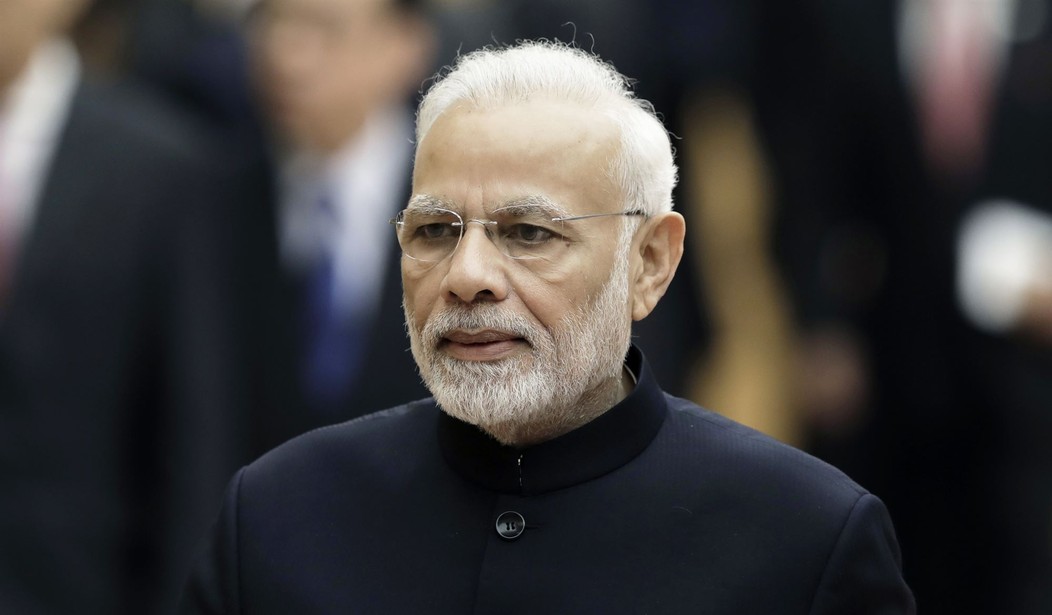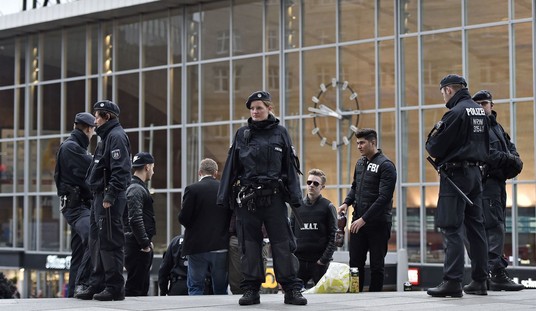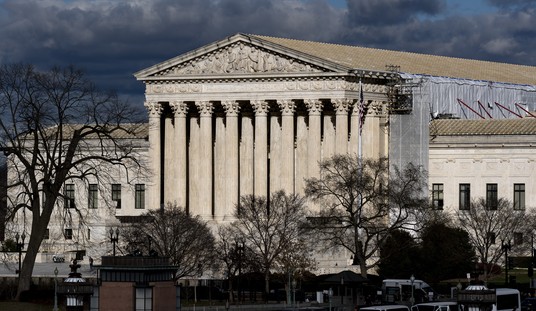I have no deep thoughts about this subject but I want to put it on your radar because there’s every indication that it’ll end up as the worst COVID outbreak on Earth since the pandemic began. That distinction currently belongs to Brazil, I think, but India’s population dwarfs that country’s. And India is poorer per capita, which means more people in dire need of hospital care may not be able to get it.
Where the death toll might go on this, God only knows.
The epidemic curve there has turned vertical. And it must be stressed: In a poor nation that isn’t doing much testing (India ranks 116th in tests per capita), the number of confirmed cases only scratches the surface of the true number of infections.
Graph of the daily cases is terrifying
Family/friends in India say its as bad as it seems
Hospitals out of oxygen
Large numbers of doctors and nurses sick with COVID
Vaccines hard to find
And no clear end in sight pic.twitter.com/XVc4TNNecK
— Ashish K. Jha, MD, MPH (@ashishkjha) April 21, 2021
Three hundred thousand cases a day is a lot, needless to say, but the U.S. approached that number during its worst stretch of the winter and we have only a quarter the population that India does. If 300,000 were an accurate measure of what they’re facing right now, it wouldn’t be devastating. But the IHME estimates that the actual number of infections in India is around 29 times the number of confirmed cases, which, if true, would mean nearly seven million new cases. Each day. With each of those people capable of infecting multiple others.
What does that look like on the ground? Take 10 minutes to read the new reports about the crisis in India from the Financial Times and CNN. They correspond in key particulars: The health system is collapsing, people who need hospital beds can’t find them, supplemental oxygen is scarce, cemeteries and crematoria are straining under the load, and vaccinations are only crawling along.

Yesterday India recorded 2,000 official deaths from COVID, a tiny number given the size of their population. (Equivalent to around 500 in the U.S.) But no one has the slightest idea what the true death toll is. The Financial Times offers this data:

The Times notes that in some Indian states the ratio of known deaths from the disease to officially reported deaths is running at around nine to one. Quote: “In the Jamnagar district in Gujarat, 100 people died of Covid-19 but only one Covid death was reported.” And what’s happening in India’s poorest rural regions, where there’s little medical care and even less reporting? Again, God only knows. Compare ICU usage in India lately to ICU usage in some of the planet’s previous worst outbreaks, though:
The crisis in India is far worse than these data indicate, as @FT review today makes clear. Here ICU occupancy vs worst-hit regions early in pandemic
Role of B.1.617 variant still uncertain
Links and thread 👇https://t.co/p7tb2KjHGK pic.twitter.com/CfIoAq7cPC— Eric Topol (@EricTopol) April 21, 2021
How did a country that had endured a comparatively mild pandemic for 12 months suddenly turn into a raging inferno? There are two theories. One, a la Chile, is that India believed it had COVID licked after many months of few infections so it let down its guard and relaxed restrictions. Movie theaters opened at full capacity on February 1. The prime minister, Narendra Modi, began holding mass rallies again and didn’t bother wearing a mask. (Which sounds familiar.) Last month the health minister arrogantly declared that the country was in the “endgame of the COVID-19 pandemic.” An epidemiologist writes today that “The mass political, religious and sporting events, which are extensively covered by the Indian media, sent mixed messages about the seriousness of the pandemic” and that “there is an unfounded sense among a large number of Indians that exposure to pollution and microbes had endowed them with superior immunity.”
Worst of all, they’re in the midst of an Indian religious festival that’ll go on all month:
The biggest gathering by far is the Kumbh Mela, an important Hindu festival and one of the biggest pilgrimages on Earth. Millions of Indians are traveling from across the country to Haridwar, an ancient city in Uttarakhand state, to attend ceremonies and prayers and take holy dips in the Ganges River…
“The Kumbh Mela could go down as one of the largest mass super spreading events ever, simply because of the size of the number of people who show up there for the ritual bathing in the Ganges,” said Laxminarayan.
Granted, much of the festival takes place outdoors, where transmission is less likely. But attendees have to eat, sleep, and use the bathroom. They’re indoors sometimes. And as they infect each other and return home after the Kumbh Mela, they’re going to seed outbreaks everywhere. Modi apparently urged Indians to stay home and celebrate the festival “symbolically” instead, but not until after it was already underway. And why would people fear infection at the Ganges if Modi himself doesn’t care about his supporters getting infected at his rallies?
The other factor in India’s outbreak is that they have a variant of their very own now. A “double-mutant,” in fact, so called because it has not one but two key mutations on the spike protein:
As India's Covid epidemic worsens, so does prevalence of a "double mutation" variant, which has mutations E484Q (like E484K) and L452R (found in CA variant). Now classified as B.1.617 – it's gone from 24% of sequenced samples in February to 80% on April 1. https://t.co/tgCYu540MT
— Scott Gottlieb, MD (@ScottGottliebMD) April 16, 2021
Scientists aren’t sure yet whether it’s meaningfully more contagious than the common coronavirus but the strain’s growing prevalence is a clue that it is. Doctors are understandably worried that the variant could theoretically break through the immunity provided by vaccines:
Both mutations are known to decrease — although not completely eliminate — the binding of the antibodies created by infection and vaccination, according to Jesse Bloom, an associate professor for genome sciences and microbiology at the University of Washington…
“We did the math — we do believe that a lot of the increase in the reproduction number can be explained by these mutations,” Nithya Balasubramanian, the head of health-care research at Bernstein India, told Bloomberg TV this week. “So, yes, the mutations are a big cause for worry.”
The features of the double mutant variant are under investigation, but the L452R mutation is well characterized in U.S studies, according to Agrawal. It increases viral transmission by around 20% and reduces antibody efficacy by more than 50%, he said…
“The B.1.617 variant has all the hallmarks of a very dangerous virus,” William A. Haseltine, a former professor at Harvard Medical School wrote in Forbes on April 12. “We must do all that is possible to identify its spread and to contain it.”
Even if the vaccines work to subdue B.1.617, a major outbreak in India is fertile ground for more variants to emerge. Every infected person is a laboratory for the virus to mutate into something more dangerous and India has more “laboratories” than any country on Earth except China. The virus is running millions of “experiments” there right now — each day. The fact that until recently the country had suffered only mild spikes in cases relative to western countries also should logically mean that there’s little natural immunity in the population to help slow down the current spread. How much worse it could get is anyone’s guess, but the prospect is terrifying given that their health-care system is already at the breaking point. If you’re the praying type, now’s the time.







Join the conversation as a VIP Member